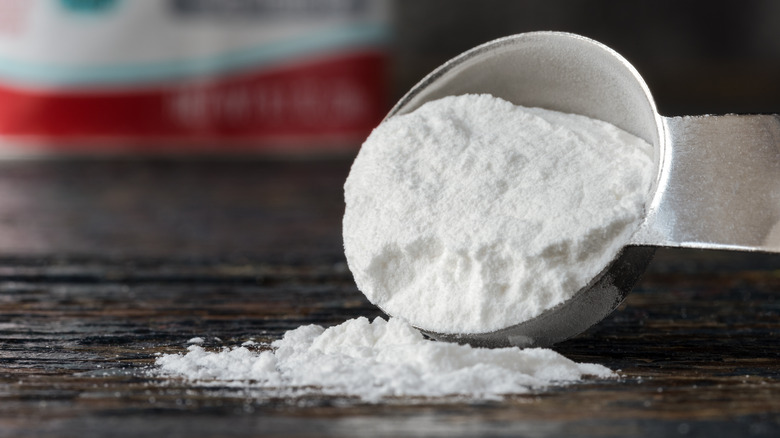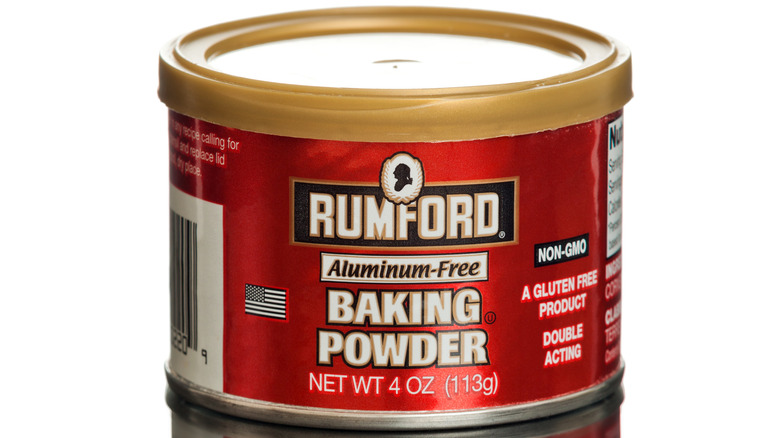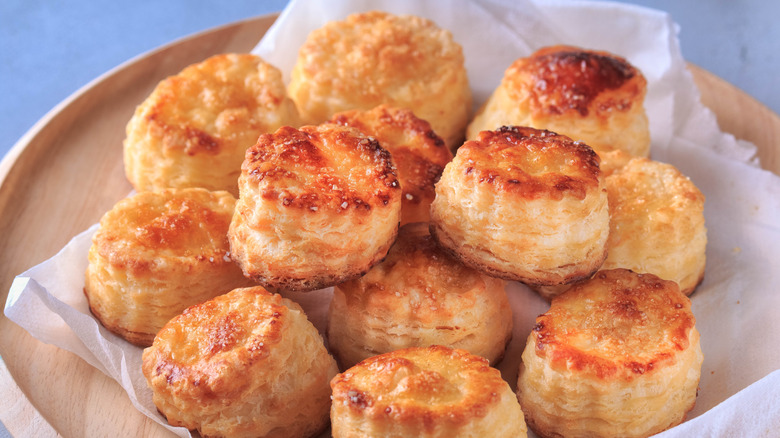What Happens If You Use Aluminum-Free Baking Powder?
Good cooks know that baking recipes should be followed to the letter, according to Brown Eyed Baker. Unlike cooking recipes, baking recipes are a formula, with precise measurements and no substitutions (unless you really know what you're doing). And one of the most commonly called-for ingredients in these recipes is baking powder.
That white powder is added to cakes, cookies, quick breads, and biscuits to make them light and fluffy. Baking powder creates carbon dioxide in the batter or dough, making little air bubbles that expand in the batter and in the heat of the oven, creating that desirable texture, per How Stuff Works.
But have you ever taken a bite of a warm, flaky biscuit or a simple, sweet cookie and had your mouth fill with a metallic taste? If so, that recipe was made with baking powder containing aluminum. Why is there a metal in your baking powder? What does it do? And what happens if you use aluminum-free baking powder?
A little food science
Baking powder is a combination of an acid and a base (plus a stabilizer, such as cornstarch). The difference between them is pH, which is a measure of acidity. (The base has a high pH, while the acid has a low pH.) When you put those two together in the presence of liquid, they form carbon dioxide. That gas fills in the little spaces in your batter or dough that are created when you mix butter and sugar or flour. The base is usually baking soda, according to How Stuff Works. The acid can be either sodium aluminum sulfate or monocalcium phosphate, per Cook's Illustrated. And those two compounds work differently in batters and doughs.
There are two opportunities to make your baked goods fluffy: when you combine the dry ingredients with liquid, and in the oven. Sodium aluminum sulfate will react some in liquid, but it does its best work in heat. And monocalcium phosphate does its best work in liquid; not so much in heat. Because both compounds react in liquid and heat, they're called "double acting," according to MyRecipes.
So, besides taste, what's the difference? Because aluminum-free baking powder doesn't work as well in heat, you don't get as much "oven spring,"the technical term for cakes and breads rising in the heat, per Encyclopedia.com. So you should hustle those batters and doughs into the oven fairly quickly. As long as you do that, you can use baking powder without aluminum with no issues.
How to start baking with aluminum-free baking powder
You can find aluminum-free baking powder at grocery stores, right next to the aluminum-containing product. If you run out of baking powder and can't get to the store, or it's expired (always check that date so you don't waste ingredients and time and effort) you can make homemade baking powder, too. Simply combine twice the amount of cream of tartar, which is the acidic part, with half the amount of baking soda, per Little House Living. (Just remember that cream of tartar isn't tartar sauce; it's another white powder used mostly to stabilize egg white foam.) And keep in mind that this combination is a single acting powder that only forms carbon dioxide in liquid, so if you choose this route, get that cake into the oven ASAP.
And if your recipe calls for baking powder and baking soda, it's because there's another acidic ingredient, such as lemon juice, brown sugar, or chocolate, in the batter or dough. Unless that acid is balanced with the high pH of a little bit of baking soda, the texture and taste will be affected, according to Baker Bettie.
Now, it's time to bake. Use your aluminum-free baking powder in recipes for sheet pan vanilla cake, Southern-style biscuits, Irish quick bread, or cranberry orange quick bread. Just remember to follow the recipe precisely, measure carefully, and set your oven timer.


